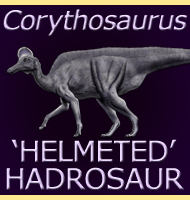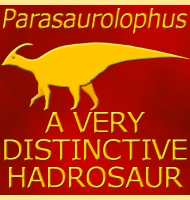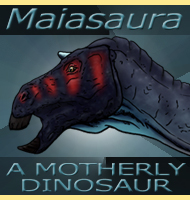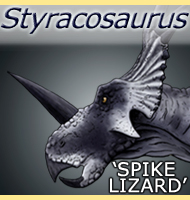


Kerberosaurus
Name:
Kerberosaurus
(Kerberos lizard).
Phonetic: Ker-be-ro-sore-us.
Named By: Y. L. Bolotsky & P.
Godefroit - 2004.
Classification: Chordata, Reptilia, Dinosauria,
Ornithischia, Ornithopoda, Hadrosauridae, Saurolophinae.
Species: K. manakini (type).
Diet: Herbivore.
Size: Uncertain due to lack of fossil remains, but
estimates range about 8 meters total body length.
Known locations: Russia, Amur Region -
Tsagayan Formation.
Time period: Maastrichtian of the Cretaceous.
Fossil representation: Partial skull.
Because of a current lack of fossils for this genus, the only thing that can be said with any certainty is that Kerberosaurus was a saurolophine hadrosaurid, the group of hadrosaurs noted to have solid head crests like those of Saurolophus. The skull remains of Kerberosaurus were discovered in a bone bed of other Mesozoic animals including the lambeosaurine hadrosaurid Amurosaurus, though as a saurolophine hadrosaurid, Kerberosaurus would have been a distantly related but similar hadrosaur as Amurosaurus (lambeosaurine hadrosaurids like Amurosaurus are so named because they have hollow head crests similar to that of the groups type genus Lambeosaurus).
Further reading
- A new hadrosaurine dinosaur from the Late Cretaceous of Far Eastern
Russia. - Journal of Vertebrate Paleontology. 24 (2): 351–365. - Y. L.
Bolotsky & P. Godefroit - 2004.
----------------------------------------------------------------------------
Random favourites
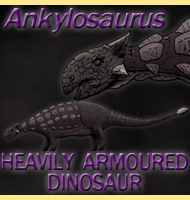 |
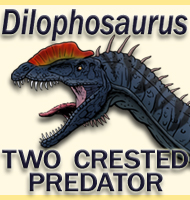 |
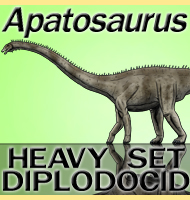 |
